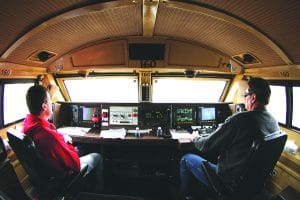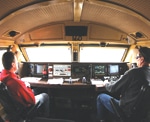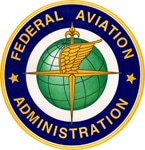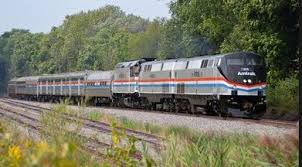
SMART TD supports the core requirements and will file comments during the comment period to further improve the proposed rule. John Previsich, SMART Transportation Division President, said: “We thank Secretary Foxx and Administrator Feinberg for tackling this difficult issue and look forward to working with them to improve the proposed rule. Our view is that one-person operations are unsafe under any circumstances and we believe issuing this proposed rule is a critical first step in helping to ensure that our nation’s trains are operated fully staffed with two qualified crew members. Airplanes are not allowed to fly with just one pilot, and for sound safety reasons trains, many hauling hazardous materials – should be no different. The check, double check and extra set of eyes and ears watching both sides of the train and the division of tasks are safety measures that cannot be replaced by rules or technology.”
National polling shows that a requirement for two-person crews has overwhelming support on both sides of the political aisle, as more than 80% of those polled in both red and blue regions of the country are in favor of a two-person crew mandate. John Risch, SMART Transportation Division National Legislative Director, also responded to the proposed rule: “FRA professionals who know and understand rail operations recognize how important it is to have a minimum of two crew members on trains for a host of safety reasons. DOT studies also bear this out. We will work to improve this rule by making the case for a final rule that makes it extremely rare for railroads to run single-person operations. While this regulatory effort is critical we also call on Congress to pass H.R. 1763, the Safe Freight Act, which would require that all freight trains are operated by a crew of at least two individuals – a certified conductor and a certified engineer.”
The SMART Transportation Division is comprised of approximately 125,000 active and retired members of the former United Transportation Union, who work in a variety of crafts in the transportation industry.
Contact: John Risch
jrisch@smart-union.org 202-543-7714
Author: amyr

ABC News reports that 32 people were taken to the hospital with injuries after an Amtrak train derailed near Cimarron, Kan., around Midnight, March 14.
The injuries suffered by passengers were not life threatening. Amtrak Southwest Chief Train 4 was en route to Chicago from Los Angeles when it derailed.
Read more from ABC News.
SMART TD National Safety Team member John O’Brien has been dispatched to the scene of the accident to assist the National Transportation Safety Board (NTSB) to determine why the train derailed. The NTSB reports that Timothy Depaepe is the NTSB’s investigator-in-charge.
Click here to read Amtrak’s press release on the incident. Friends and family of those aboard the train that derailed can call 800-523-9101 for information about their loved ones.
ABC News reports that a potential strike or lockout on New Jersey Transit (NJT) has been averted. A tentative agreement has been reached between the carrier and the Rail Labor Coalition which represents 4,000 union members employed by NJT.
Union members now will have a chance to vote to accept or reject the tentative agreement. Had a tentative agreement not been reached, a strike or lockout could have occurred as early as Sunday, March 13 at 12:01 a.m.
Read more from ABC News.


The joint Advance Notice of Proposed Rulemaking (ANPRM) is the first step as both agencies consider whether to propose requirements specifically on OSA. FRA and FMCSA will host three public listening sessions to gather input on OSA in Washington, D.C., Chicago, and Los Angeles.
“It is imperative for everyone’s safety that commercial motor vehicle drivers and train operators be fully focused and immediately responsive at all times,” said U.S. Transportation Secretary Anthony Foxx. “DOT strongly encourages comment from the public on how to best respond to this national health and transportation safety issue.”
It is estimated that 22 million men and women could be suffering from undiagnosed OSA, a respiratory disorder characterized by a reduction or cessation of breathing during sleep. Undiagnosed or inadequately treated moderate to severe OSA can cause unintended sleep episodes and deficits in attention, concentration, situational awareness, memory, and the capacity to safely respond to hazards when performing safety sensitive service. For individuals with OSA, eight hours of sleep can be less refreshing than four hours of ordinary, uninterrupted sleep, according to a study by the American Academy of Sleep Medicine. The size and scope of the potential problem means that OSA presents a critical safety issue for all modes and operations in the transportation industry.
“The sooner patients with OSA are diagnosed and treated, the sooner our rail network will be safer,” said FRA Administrator Sarah E. Feinberg. “Over the next 90 days, we look forward to hearing views from stakeholders about the prevalence of obstructive sleep apnea, their views on diagnosis and treatment, and potential economic impacts.”
“The collection and analysis of sound data on the impact of OSA must be our immediate first step,” said FMCSA Acting Administrator Scott Darling. “We call upon the public to help us better understand the prevalence of OSA among commercial truck and bus drivers, as well as the safety and economic impacts on the truck and bus industries.”
FRA is also currently working on a rule that will require certain railroads to establish fatigue management plans. In 2012, FRA partnered with the Division of Sleep Medicine at Harvard Medical School, the WFBH Education Foundation and the John A. Volpe National Transportation Systems Center to sponsor the Railroaders’ Guide to Healthy Sleep website. The site provides educational information to railroaders and their families about sleep disorders and information to improve sleep quality.
For any CMV drivers who are detected to have a respiratory dysfunction, such as OSA, FMCSA currently recommends that medical examiners refer them for further evaluation and therapy. In January 2015, FMCSA issued a bulletin to remind healthcare professionals on the agency’s National Registry of Certified Medical Examiners of the current physical qualifications standard and advisory criteria concerning the respiratory system, specifically how the requirements apply to drivers that may have obstructive sleep apnea. Click here for a copy of the FMCSA bulletin.
To read the ANPRM and provide comments, visit: https://www.fra.dot.gov/eLib/Details/L17364.
– See more at: https://www.transportation.gov/briefing-room/us-dot-seeks-input-screening-and-treating-commercial-motor-vehicle-drivers-and-rail#sthash.VXrJOaUd.dpuf
Read the complete press release here.
Rule would streamline approval of new technologies


The following questions and answers show the differences in railroad retirement and social security benefits payable at the close of the fiscal year ending September 30, 2015. They also show the differences in age requirements and payroll taxes under the two systems.
1. How do the average monthly railroad retirement and social security benefits paid to retired employees and spouses compare?
The average age annuity being paid by the Railroad Retirement Board (RRB) at the end of fiscal year 2015 to career rail employees was $3,285 a month, and for all retired rail employees the average was $2,625. The average age retirement benefit being paid under social security was nearly $1,340 a month. Spouse benefits averaged $975 a month under railroad retirement compared to $665 under social security.
The Railroad Retirement Act also provides supplemental railroad retirement annuities of between $23 and $43 a month, which are payable to employees who retire directly from the rail industry with 25 or more years of service.
2. Are the benefits awarded to recent retirees generally greater than the benefits payable to those who retired years ago?
Yes, because recent awards are based on higher average earnings. Age annuities awarded to career railroad employees retiring at the end of fiscal year 2015 averaged almost $3,805 a month while monthly benefits awarded to workers retiring at full retirement age under social security averaged nearly $1,840. If spouse benefits are added, the combined benefits for the employee and spouse would total $5,325 under railroad retirement coverage, compared to $2,755 under social security. Adding a supplemental annuity to the railroad family’s benefit increases average total benefits for current career rail retirees to nearly $5,360 a month.
3. How much are the disability benefits currently awarded?
Disabled railroad workers retiring directly from the railroad industry at the end of fiscal year 2015 were awarded more than $2,820 a month on the average while awards for disabled workers under social security averaged over $1,270.
While both the Railroad Retirement and Social Security Acts provide benefits to workers who are totally disabled for any regular work, the Railroad Retirement Act also provides disability benefits specifically for employees who are disabled for work in their regular railroad occupation. Employees may be eligible for such an occupational disability annuity at age 60 with 10 years of service, or at any age with 20 years of service.
4. Can railroaders receive benefits at earlier ages than workers under social security?
Railroad employees with 30 or more years of creditable service are eligible for regular annuities based on age and service the first full month they are age 60, and rail employees with less than 30 years of creditable service are eligible for regular annuities based on age and service the first full month they are age 62.
No early retirement reduction applies if a rail employee retires at age 60 or older with 30 years of service and his or her retirement is after 2001, or if the employee retired before 2002 at age 62 or older with 30 years of service.
Early retirement reductions are otherwise applied to annuities awarded before full retirement age, the age at which an employee can receive full benefits with no reduction for early retirement. This ranges from age 65 for those born before 1938 to age 67 for those born in 1960 or later, the same as under social security.
Under social security, a worker cannot begin receiving retirement benefits based on age until age 62, regardless of how long he or she worked, and social security retirement benefits are reduced for retirement prior to full retirement age regardless of years of coverage.
5. Can the spouse of a railroader receive a benefit at an earlier age than the spouse of a worker under social security?
If a retired railroad employee with 30 or more years of service is age 60, the employee’s spouse is also eligible for an annuity the first full month the spouse is age 60.
Certain early retirement reductions are applied if the employee first became eligible for a 60/30 annuity July 1, 1984, or later, and retired at ages 60 or 61 before 2002. If the employee was awarded a disability annuity, has attained age 60 and has 30 years of service, the spouse can receive an unreduced annuity the first full month she or he is age 60, regardless of whether the employee annuity began before or after 2002, as long as the spouse’s annuity beginning date is after 2001.
To qualify for a spouse’s benefit under social security, an applicant must be at least age 62, or any age if caring for a child who is entitled to receive benefits based on the applicant’s spouse’s record.
6. Does social security offer any benefits that are not available under railroad retirement?
Social security does pay certain types of benefits that are not available under railroad retirement. For example, social security provides children’s benefits when an employee is disabled, retired or deceased. Under current law, the Railroad Retirement Act only provides children’s benefits if the employee is deceased.
However, the Railroad Retirement Act includes a special minimum guaranty provision which ensures that railroad families will not receive less in monthly benefits than they would have if railroad earnings were covered by social security rather than railroad retirement laws. This guaranty is intended to cover situations in which one or more members of a family would otherwise be eligible for a type of social security benefit that is not provided under the Railroad Retirement Act. Therefore, if a retired rail employee has children who would otherwise be eligible for a benefit under social security, the employee’s annuity can be increased to reflect what social security would pay the family.
7. How much are monthly benefits for survivors under railroad retirement and social security?
Survivor benefits are generally higher if payable by the RRB rather than social security. At the end of fiscal year 2015, the average annuity being paid to all aged and disabled widow(er)s was $1,565 a month, compared to $1,250 under social security.
Benefits awarded by the RRB at the end of fiscal year 2015 to aged and disabled widow(er)s of railroaders averaged nearly $2,065 a month, compared to more than $1,195 under social security.
The annuities being paid at the end of fiscal year 2015 to widowed mothers/fathers averaged $1,835 a month and children’s annuities averaged $1,055, compared to $940 and $830 a month for widowed mothers/fathers and children, respectively, under social security.
Those awarded at the end of fiscal year 2015 averaged $1,670 a month for widowed mothers/fathers and $1,320 a month for children under railroad retirement, compared to $900 and $815 for widowed mothers/fathers and children, respectively, under social security.
8. How do railroad retirement and social security lump-sum death benefit provisions differ?
Both the railroad retirement and social security systems provide a lump-sum death benefit. The railroad retirement lump-sum benefit is generally payable only if survivor annuities are not immediately due upon an employee’s death. The social security lump-sum benefit may be payable regardless of whether monthly benefits are also due. Both railroad retirement and social security provide a lump-sum benefit of $255. However, if a railroad employee completed 10 years of creditable railroad service before 1975, the average railroad retirement lump-sum benefit payable is $1,010. Also, if an employee had less than 10 years of service, but had at least 5 years of such service after 1995, he or she would have to have had an insured status under social security law (counting both railroad retirement and social security credits) in order for the $255 lump-sum benefit to be payable.
The social security lump sum is generally only payable to the widow(er) living with the employee at the time of death. Under railroad retirement, if the employee had 10 years of service before 1975, and was not survived by a living-with widow(er), the lump sum may be paid to the funeral home or the payer of the funeral expenses.
9. How do railroad retirement and social security payroll taxes compare?
Railroad retirement payroll taxes, like railroad retirement benefits, are calculated on a two-tier basis. Rail employees and employers pay tier I taxes at the same rate as social security taxes, 7.65 percent, consisting of 6.20 percent for retirement on earnings up to $118,500 in 2016, and
1.45 percent for Medicare hospital insurance on all earnings. An additional 0.9 percent in Medicare taxes (2.35 percent in total) will be withheld from employees on earnings above $200,000.
In addition, rail employees and employers both pay tier II taxes which are used to finance railroad retirement benefit payments over and above social security levels.
In 2016, the tier II tax rate on earnings up to $88,200 is 4.9 percent for employees and 13.1 percent for employers.
10. How much are regular railroad retirement taxes for an employee earning $118,500 in 2016 compared to social security taxes?
The maximum amount of regular railroad retirement taxes that an employee earning $118,500 can pay in 2016 is $13,387.05, compared to $9,065.25 under social security. For railroad employers, the maximum annual regular retirement taxes on an employee earning $118,500 are $20,619.45, compared to $9,065.25 under social security. Employees earning over $118,500, and their employers, will pay more in retirement taxes than the above amounts because the Medicare hospital insurance tax is applied to all earnings.

